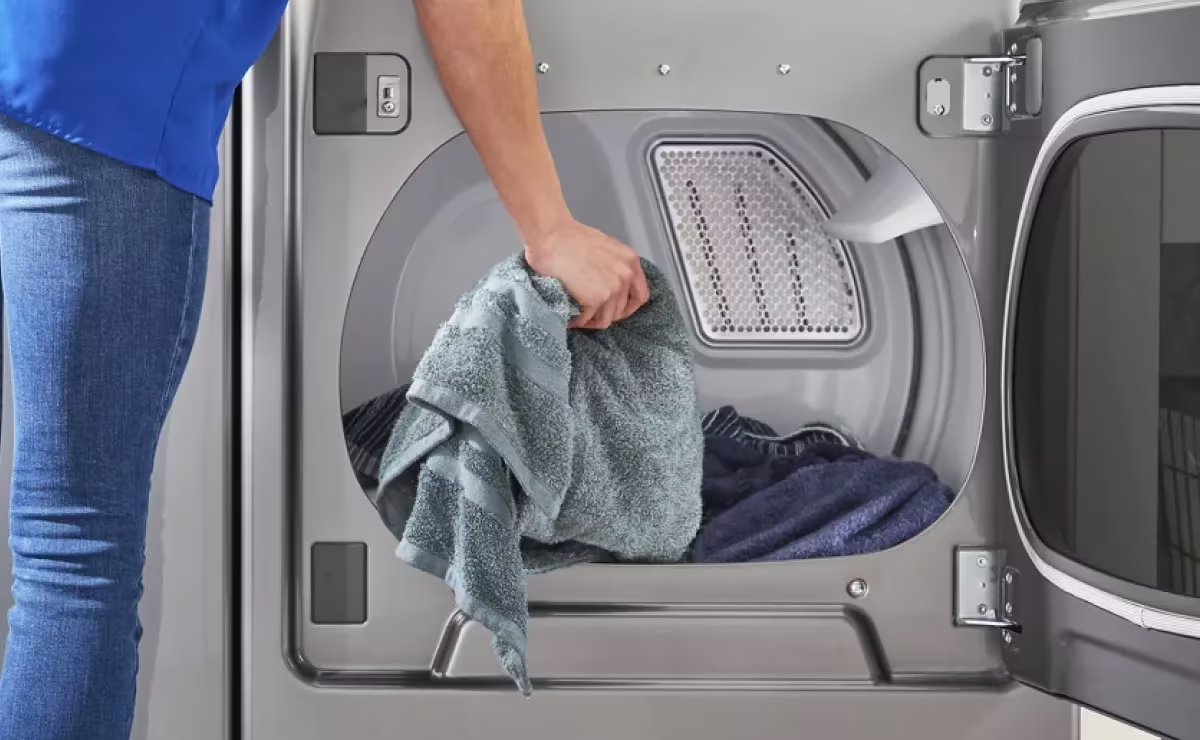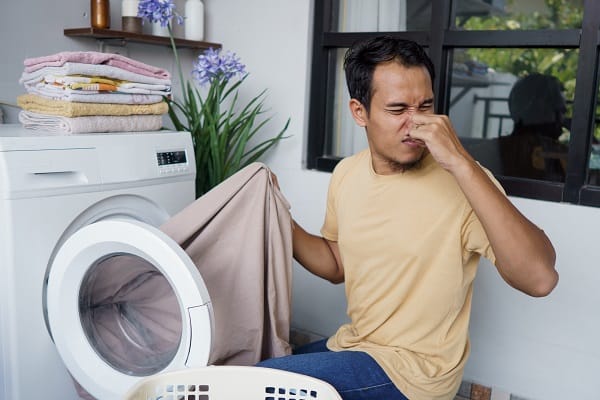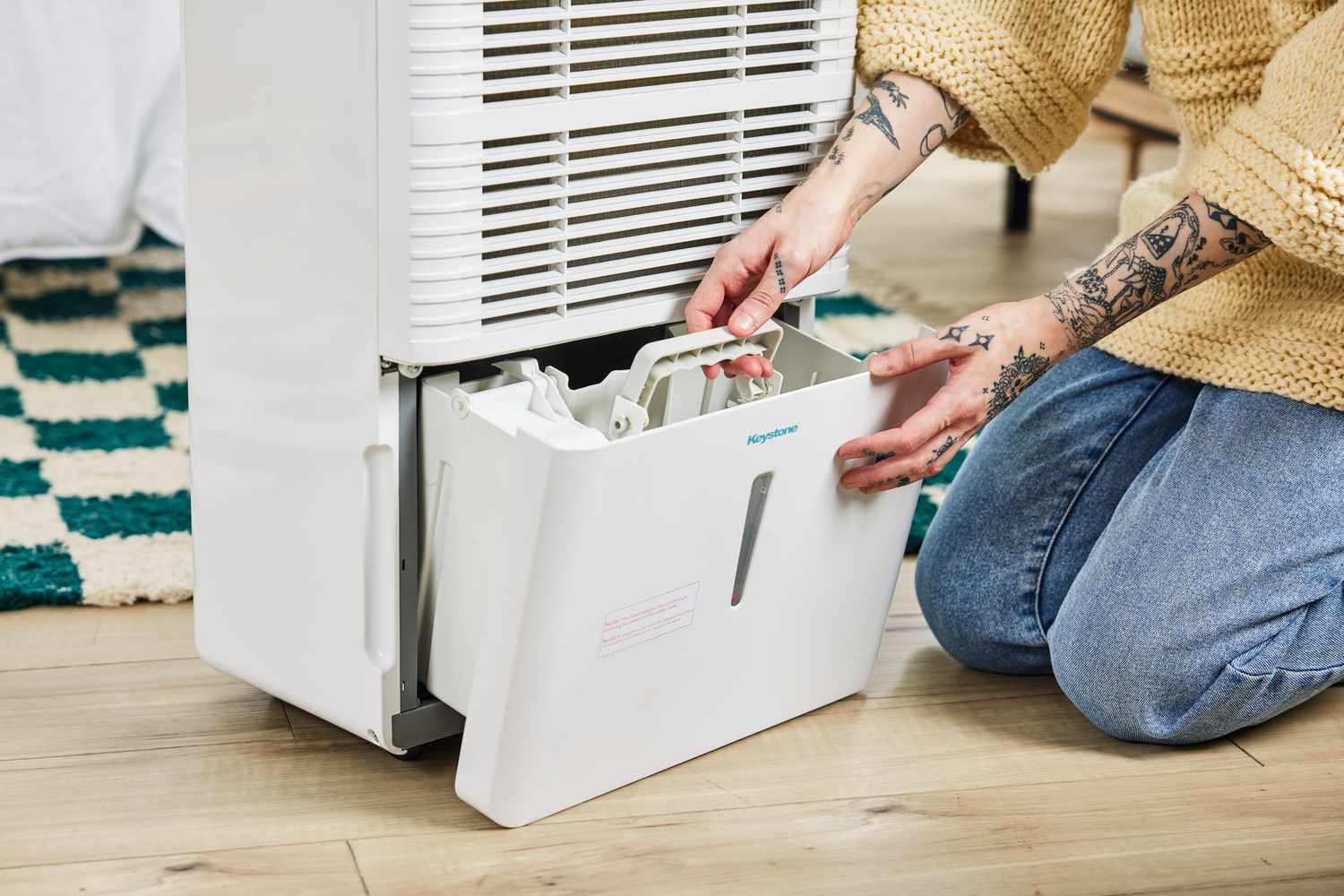
What Causes a Mildew Smell in Your Dryer?
So, why does your dryer smell like mildew? The most common cause of mildew smell in a dryer is moisture buildup. Mildew thrives in damp environments, and if your dryer isn’t drying properly or if moisture is getting trapped in the machine, it can create the perfect breeding ground for mold and mildew. Here are some of the most common reasons why your dryer might develop a mildew odor:
1. Excess Moisture in the Drum
If moisture is left in the dryer drum after a cycle, it can lead to mildew growth. This can happen if you leave wet clothes in the dryer for an extended period, or if the dryer itself isn’t fully drying the clothes due to a clogged vent or malfunctioning parts.
2. Clogged Lint Trap
A clogged lint trap can reduce airflow in the dryer, causing moisture to build up inside the drum. Without proper ventilation, moisture can lead to mold and mildew growth, which results in the musty smell you’re noticing. Cleaning the lint trap regularly can help prevent this issue.
3. Blocked Vent Hose

The vent hose is responsible for expelling hot, moist air from your dryer to the outside. If the vent hose is clogged or blocked, the moisture has nowhere to go and can become trapped in the dryer, leading to mildew. Over time, the moisture buildup can cause the interior of your dryer to smell musty.
4. Wet Clothes Left in the Dryer

Leaving wet or damp clothes sitting in the dryer after the cycle has finished can also cause mildew to grow. The residual moisture provides the perfect environment for mildew to thrive, especially if the dryer door is closed and airflow is limited.
5. Damp Laundry Room
If your laundry room is damp or has high humidity levels, it can contribute to moisture buildup in your dryer. The increased humidity in the room can affect how well your dryer operates and may lead to mildew growth inside the machine.
For more tips on dealing with mildew in your home, visit the CDC’s guide to mold and dampness.
How to Get Rid of the Mildew Smell in Your Dryer
If your dryer smells like mildew, it’s important to clean it thoroughly to remove any mildew or mold growth and prevent the smell from returning. Here’s how to get rid of the mildew smell in your dryer:
| Step | What to Do |
|---|---|
| 1. Clean the Lint Trap | Start by removing the lint trap and cleaning out any lint or debris. Use a vacuum or a soft brush to remove lint that may be trapped inside the lint trap compartment. A clogged lint trap can reduce airflow and lead to moisture buildup. |
| 2. Wipe Down the Drum | Wipe the inside of the dryer drum with a mixture of water and white vinegar or a mild detergent. This will help eliminate any mildew or mold spores that may be present inside the drum. Be sure to dry the drum completely afterward to prevent further moisture buildup. |
| 3. Check the Vent Hose | Inspect the dryer vent hose for any clogs or blockages. Remove any lint, debris, or other obstructions that could be preventing proper airflow. If the vent hose is clogged, it can trap moisture inside the dryer and cause a mildew smell. |
| 4. Run a Cleaning Cycle | Once you’ve cleaned the lint trap and drum, run an empty cycle on high heat to help dry out the inside of the dryer. Adding a few towels or dryer sheets can help absorb any lingering moisture and eliminate odors. |
| 5. Improve Ventilation in the Laundry Room | If your laundry room has poor ventilation, consider improving airflow by opening windows or using a fan. Proper ventilation can help reduce humidity and prevent moisture from building up in the dryer. |
For more detailed instructions on cleaning your dryer, check out this HGTV guide to cleaning your dryer.
Preventing Future Mildew Smells in Your Dryer
Once you’ve cleaned your dryer and removed the mildew smell, it’s important to take steps to prevent the smell from coming back. Here’s how you can keep your dryer smelling fresh and mildew-free:
1. Clean the Lint Trap After Every Use

Cleaning the lint trap after every dryer cycle helps improve airflow and prevents moisture buildup. This simple step can significantly reduce the risk of mildew forming inside your dryer.
2. Don’t Leave Wet Clothes in the Dryer
Avoid leaving wet or damp clothes in the dryer for extended periods. As soon as the drying cycle is finished, remove the clothes and leave the dryer door open for a few minutes to allow any remaining moisture to escape.
3. Run a High-Heat Cycle Periodically
Running an empty cycle on high heat every few weeks can help dry out any moisture that may have accumulated inside the dryer. This is especially helpful in humid climates where mildew is more likely to develop.
4. Inspect the Vent Hose Regularly
Check the vent hose regularly for any clogs or blockages. If the hose is obstructed, it can trap moisture inside the dryer, leading to mold and mildew growth. Keeping the vent hose clean ensures proper airflow and prevents odors.
5. Use a Dehumidifier

If your laundry room is prone to high humidity, consider using a dehumidifier to keep moisture levels under control. Reducing humidity in the room can help prevent moisture from building up in your dryer.
FAQ
| Question | Answer |
|---|---|
| Why does my dryer smell like mildew? | Your dryer may smell like mildew due to excess moisture inside the drum, a clogged vent hose, or wet clothes left in the machine. Moisture buildup can create the ideal environment for mildew and mold growth. |
| How can I get rid of the mildew smell in my dryer? | To remove the mildew smell, clean the lint trap, wipe down the drum, check the vent hose for blockages, and run a high-heat cleaning cycle. Improving ventilation in the laundry room can also help reduce humidity and prevent future odors. |
| Is mildew in my dryer dangerous? | While mildew in your dryer is unlikely to pose a serious health risk, it can cause unpleasant odors and affect the freshness of your clothes. It’s important to clean the dryer regularly to prevent mildew from spreading. |
| How can I prevent mildew from returning to my dryer? | To prevent mildew from returning, clean the lint trap after every use, avoid leaving wet clothes in the dryer, inspect the vent hose regularly, and run a high-heat cleaning cycle periodically to remove any moisture buildup. |
| Can a clogged vent hose cause mildew? | Yes, a clogged vent hose can trap moisture inside the dryer, leading to mildew growth. It’s important to keep the vent hose clean and clear to ensure proper airflow and prevent moisture buildup. |
If you’re dealing with persistent mildew smells or other mold-related issues in your home, contact Citywide Mold Mitigation for professional mold removal and prevention services.

